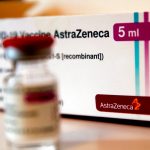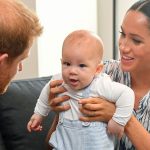COVID lockdown restrictions in March 2020 did not lead to a baby boom – and the total fertility rate in England and Wales for 2021 could end up being the lowest ever recorded, ONS data suggests.
Fertility rates for December 2020 and January 2021 showed “relatively steep decreases” compared with the equivalent month the previous year, down by 8.1% and 10.2% respectively, according to the Office for National Statistics (ONS).
Live births in these months would have mostly been conceived in the weeks after the first coronavirus lockdown came into force.
However, couples got busy when restrictions lifted in the summer months.
Live COVID updates as travel list updated
Figures show a 1.7% year-on-year increase in the fertility rate for March 2021 – which “mostly translate to live births conceived when lockdown restrictions were beginning to be eased in summer 2020”, the ONS said.
The total fertility rate is the average number of live children a group of women would bear if they experienced age-specific fertility rates throughout their childbearing life – and could end up being the lowest ever recorded this year.
According to ONS data, for the first three months of this year, the rate for 2021 is estimated to be 1.53 children per woman.
This is down from 1.92 children per woman in 2011.
Data also shows live births in England and Wales in 2020 fell for the fifth consecutive year.
There was a total of 615,557 live births, down by 4% on 2019 – and a 16% drop from the recent peak of 730,883 births in 2012.
There were 2,429 stillbirths last year, the equivalent of 3.9 per 1,000 births, the ONS said, down slightly from 2,596 and a rate of 4.0 in 2019.
The stillbirth rate for January 2021 was 4.7 – the highest for any calendar month since March 2018.






















